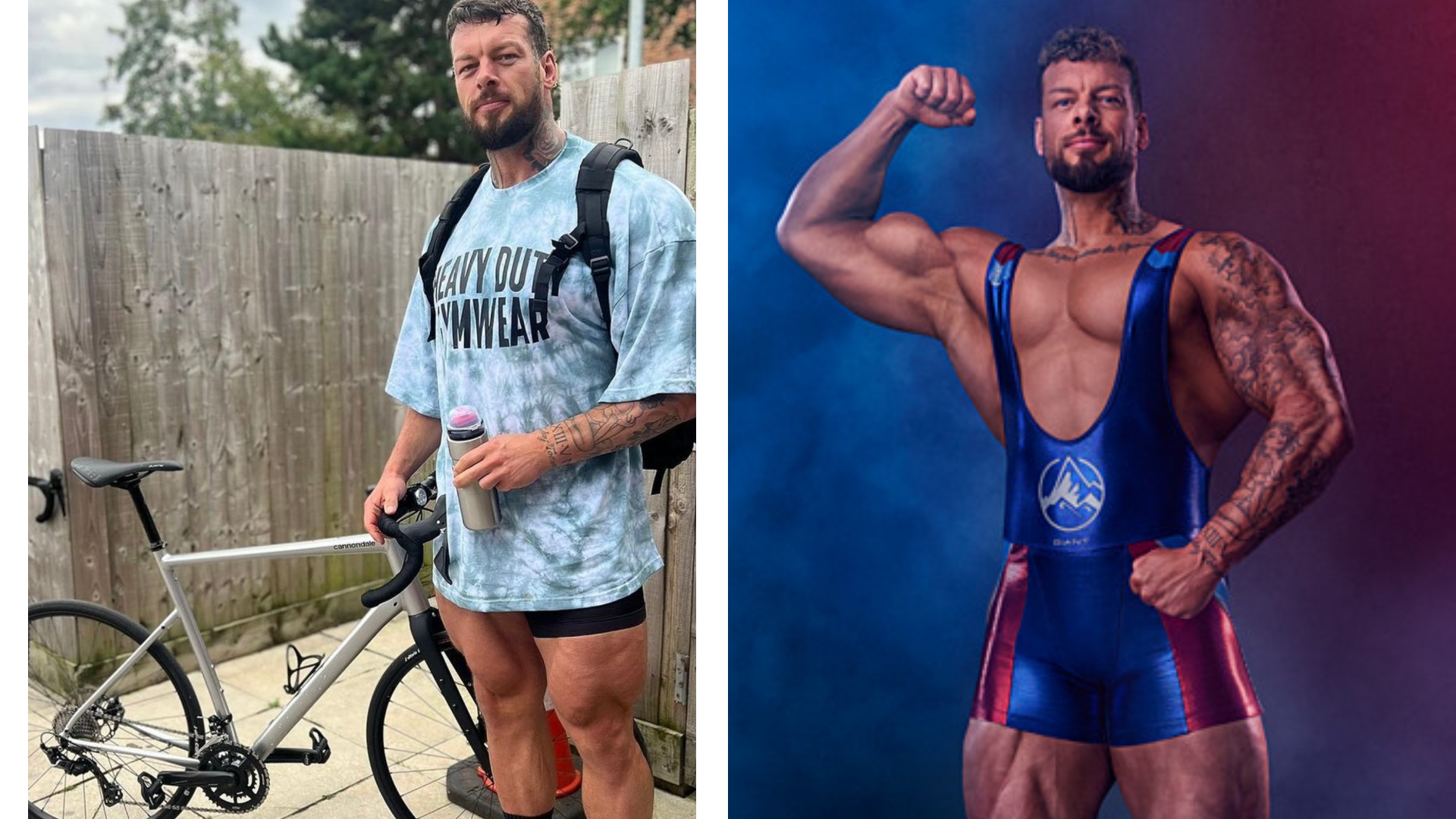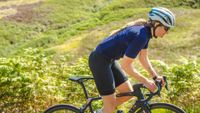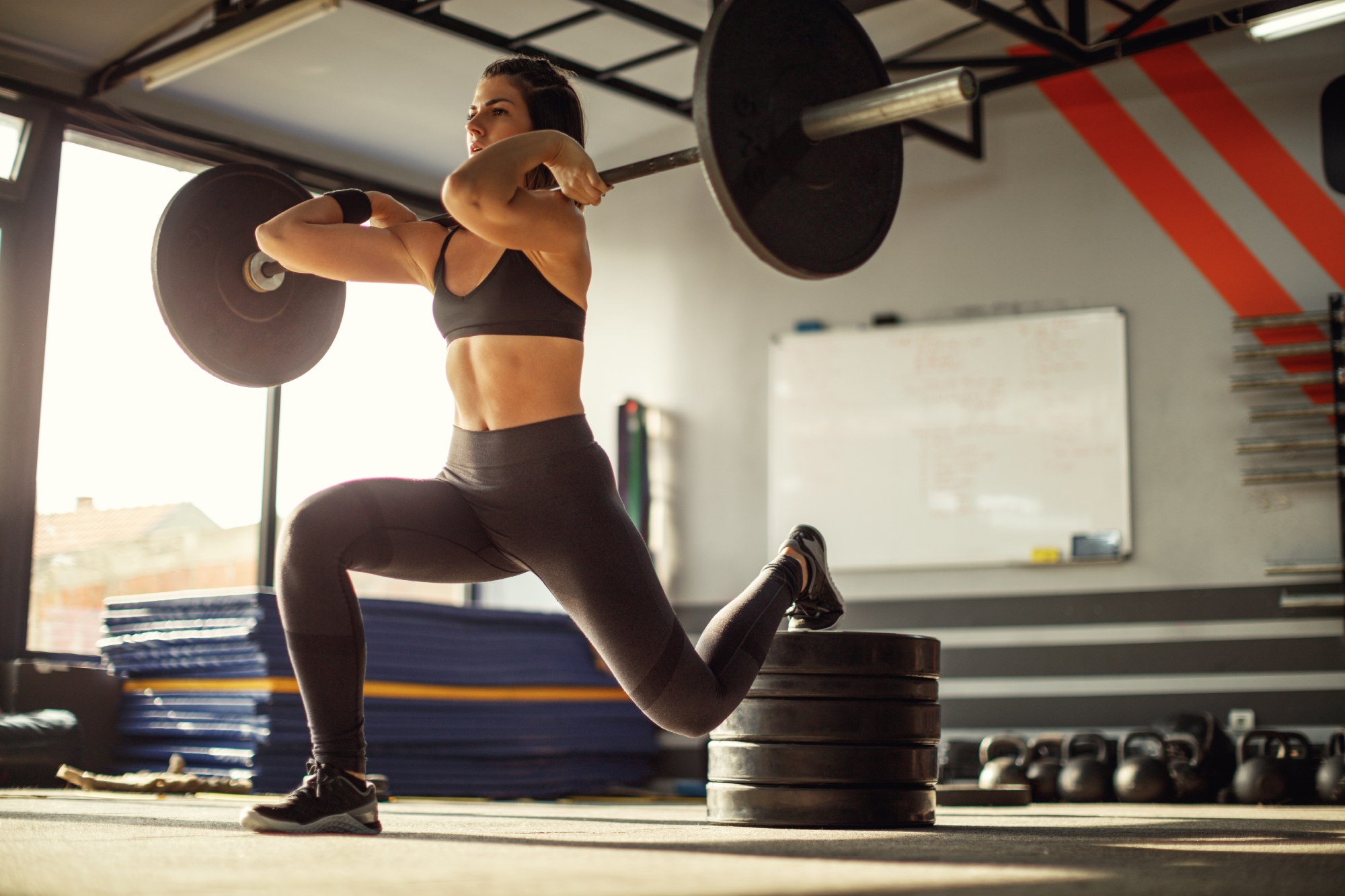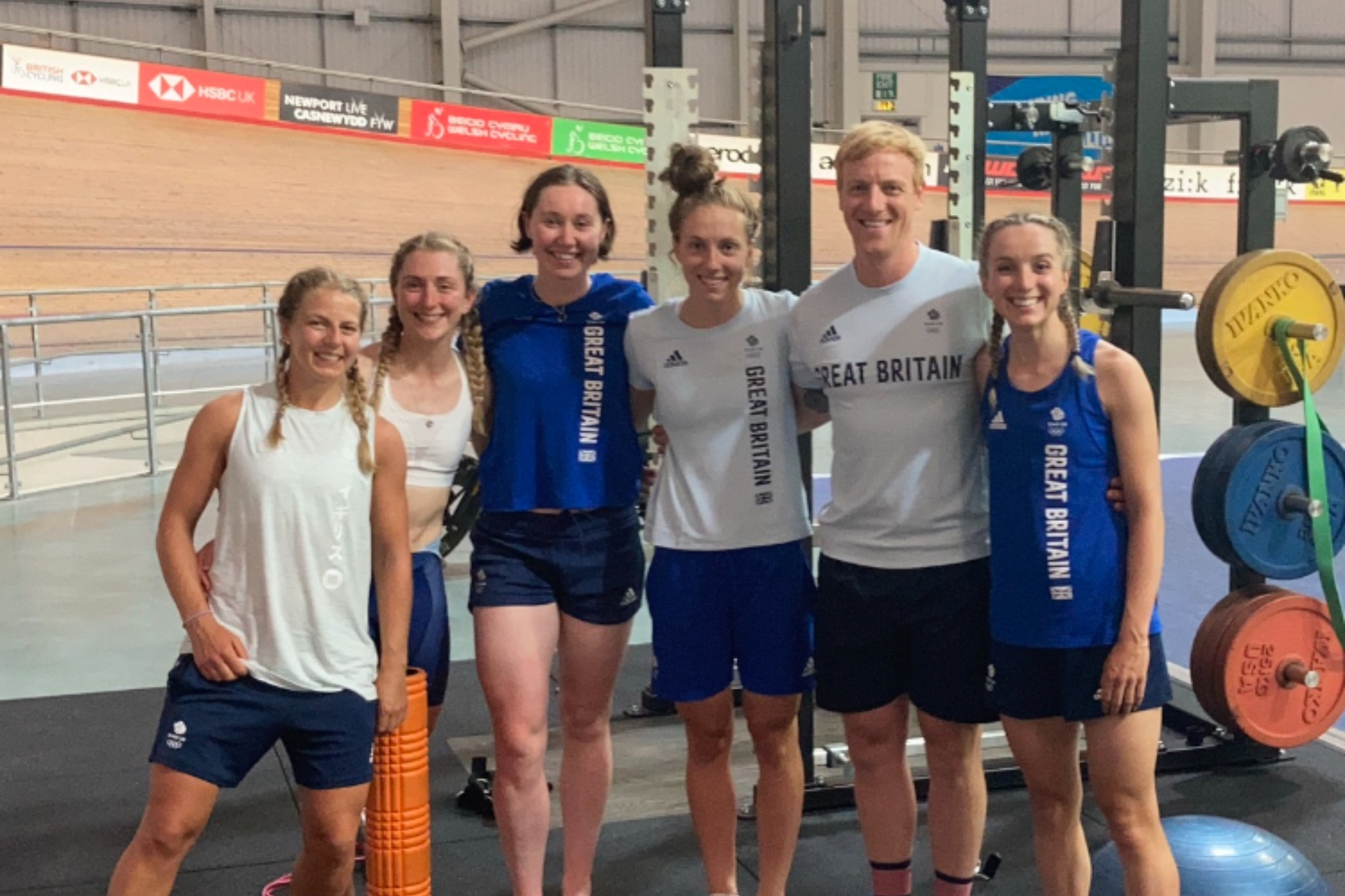Split squats are the order of the day for Gladiator star and cyclist 'Giant' - should you add them to your workouts?
In our new weekly series, Hannah Bussey speaks to riders on the one thing that's made all the difference to their riding - and asks - could it work for you?


Most of us have busy lives, packing in cycling alongside work, family commitments and more - making 'quick wins' extremely inviting. But, do they work?
In this new weekly series, I'll be speaking to cyclists - from professional riders, coaches, psychologists or just well known personalities who love riding bikes - and asking them what one change they've made that's helped to make them a better bike rider.
This week I speak to Jamie Christian, AKA Giant in the current series of Gladiator on UK TV. Previously a IFBB Pro League bodybuilder, Christian earnt the stage name “The Giant” due to his 6’5 height. Since retiring from competitive bodybuilding, Christian has turned to bike riding to scratch his competitive itch. He has knocked out 1,800watts on a Wattbike with no specific training and has recently completed his track accreditation with a view to racing sprint events.
Just one small change - Add some split squats to your week
How to Bulgarian split squat

There are several schools of thought for how to best set up for a split squat, so it may take a little tweaking before you find what works for you. We suggest trying body weight first.
- Stand forward of an elevated surface, with feet about hip distance apart, place one foot on the raised object behind you.
- Keeping your body upright and bracing your core, lower yourself to perform a one legged squat.
- Once as low as can comfortably sink, reverse the movement, ensuring the front leg does the majority of the work.
Once you are confident in this movement pattern, you can try adding weights.
For a further challenge to your core, add weight to the non-working side, or place your rear foot on an unstable platform, such as a swiss ball.
Christian opts for Bulgarian split squats, with an elevated rear leg. This will also challenge your balance, so you may wish to start with a classic split squat, with both feet on the ground.
"On top of training legs, the one thing that helps my riding is core work and core stability, and I spend a lot of time doing core" Christian says.
"That might be like 20 minutes, five times a week. I think that's more than your average person". Quizzing Christian further and asking what is the one core exercise that helps cyclists the most, it appears that the Bulgarian split squats, which require balancing on one leg, challenging several muscles at once, are top of his list for aiding strength required on the bike.
"You see that German sprinter [Robert Förstermann] doing like 200kg split squats" he confirms, before clarifying a little to add "now, I'm not doing 200kg split squats, but it goes without saying that the power translates to the bike.
"The reason I implement split squats is to develop unilateral power (independent power in both legs).
The latest race content, interviews, features, reviews and expert buying guides, direct to your inbox!
"A balanced physique and particularly for a cyclist, a balanced power output from leg to leg will develop a more efficient pedal stroke and make your time on the bike faster and more enjoyable, especially if speed is your goal in my opinion.
"To make split squats easier you can try using a smith machine which offers a fixed point of balance. Pair them between dumbbells and a free bar to work other muscle groups that all help toward the end goal of going faster on the road or the track".
The expert's view

Peter Gascoigne stands with the British Cycling women's track squad in track centre
Split squats sound like they could be the golden ticket to huge legs and extra watts on the bike. But can just adding these in to a gym session really help that much?
Someone who knows a lot about how this specific weight training movement could help you become a better cyclist is Peter Gascoigne, GB Cycling Team Strength and Conditioning Coach to find out more.
"We all know that strength training is a proven way of getting faster on a bike over short and longer durations, and a movement like the split squat can be a great way to begin this journey" confirms Gascoigne.
"Split stance exercises won’t trump your big main lifts such squats and deadlifts," Gascoigne continues "but they are a great sequencing and synergy movement that can help eliminate muscle imbalance and prevent injury while still getting the key muscle groups stronger.
"The lunge or single leg movement pattern will focus on the quads and glutes whilst the rest of the body works to balance you. For example a Bulgarian Split Squat [where one leg is elevated] will create a 70-80% percent load increase on your front leg versus a double leg movement.
"By creating this imbalanced load, you’ll overload the key muscle groups involved in the powerphase of the pedal stroke."
This certainly sounds like the an excellent way of gaining speed on the bike. However, there's also an additional perk of adding split squats to your gym sessions - injury prevention, and even a good work round from traditional squats if you are suffering with an existing lower back injury.
Gascoigne explains more "The added benefit is you’ll also be giving your rear leg an active stretch through the quads and hip flexors helping to maintain muscle length, which is often a key issue for many cyclists when it comes to ‘anatomy slings’ and the chain between areas such as your lower back.
"This movement also allows the torso to be more upright, and loads the spine in a more vertical plain, so it can be a good option as a squat alternative for anyone suffering from lower back issues with traditional back squats.
"An additional option to split squats or forward lunges would be multi-directional lunges. This gets your body out of just working in a linear movement pattern. These don’t have to be loaded, and can be good warmup drills for getting your hips mobile and glutes activated in deeper hip angles. Examples would be things like lateral lunges or curtsey lunges" Gascoigne concludes.
Our view
Can this one small change really make me a better cyclist?
Realistically most cyclists are never going to get legs the size of Förstermann or Gascoigne no matter how many split squats we do. However, changing an existing gym routine to add these in seems an easy way of gaining strength and power on the bike.
What I really appreciated about the idea of adding these in to my weight training is the possible impact on my back health, in terms of improving muscle length. As someone who is constantly needing to work at reducing lower back pain by daily maintenance, hearing how this weight training option takes the load off my lower back when compared to traditional squats is also an obvious swap from traditional squats to remember when I am suffering from back niggles.
Hannah is Cycling Weekly’s longest-serving tech writer, having started with the magazine back in 2011. She has covered all things technical for both print and digital over multiple seasons representing CW at spring Classics, and Grand Tours and all races in between.
Hannah was a successful road and track racer herself, competing in UCI races all over Europe as well as in China, Pakistan and New Zealand.
For fun, she's ridden LEJOG unaided, a lap of Majorca in a day, won a 24-hour mountain bike race and tackled famous mountain passes in the French Alps, Pyrenees, Dolomites and Himalayas.
She lives just outside the Peak District National Park near Manchester UK with her partner, daughter and a small but beautifully formed bike collection.
